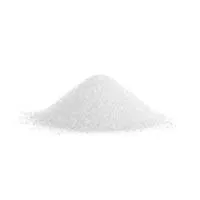
Sodium Bicarbonate Method for Sustainable Production and Environmental Benefits
The Sodium Bicarbonate Process An Overview
The sodium bicarbonate process is an essential chemical method primarily known for the production of sodium bicarbonate (NaHCO₃), commonly known as baking soda. This process, rooted in chemical principles, has various industrial, environmental, and household applications. Understanding the sodium bicarbonate process involves exploring its chemistry, production methods, and applications.
Chemical Background
Sodium bicarbonate is a mild alkaline compound that can be derived from natural sources or synthesized. Its chemical formula, NaHCO₃, indicates that it consists of sodium ions (Na⁺), bicarbonate ions (HCO₃⁻), and is a key reactant in various chemical reactions. It is fundamentally a salt of carbonic acid and is used extensively in food, pharmaceuticals, and cleaning products due to its mildness and effectiveness.
Production Methods
The most common method for producing sodium bicarbonate is through the Solvay process, which primarily utilizes the reaction between sodium chloride (NaCl) and ammonia (NH₃) in the presence of carbon dioxide (CO₂) and water (H₂O)
. The basic steps of the Solvay process can be summarized as follows1. Dissolution of Sodium Chloride Sodium chloride is dissolved in water, forming a brine solution. 2. Ammoniation Ammonia gas is introduced into the brine solution, resulting in the formation of a solution containing ammonium chloride (NH₄Cl). 3. Carbonation Carbon dioxide is bubbled through the ammonia-brine solution, leading to the precipitation of sodium bicarbonate. The chemical reaction can be represented as \[ NaCl + NH₃ + CO₂ + H₂O \rightarrow NaHCO₃ + NH₄Cl \] 4. Crystallization The sodium bicarbonate precipitate is filtered out, washed, and dried to yield the final product.
sodium bicarbonate process

Besides the Solvay process, sodium bicarbonate can also be produced using natural sources like trona ore, which contains a mixture of sodium carbonate and sodium bicarbonate, or by directly neutralizing sodium carbonate with carbon dioxide.
Applications
Sodium bicarbonate is widely used across various sectors. In the food industry, it serves as a leavening agent in baking, helping dough rise by producing carbon dioxide when heated. In pharmaceuticals, it acts as an antacid, neutralizing stomach acidity and providing relief from indigestion. The compound is also utilized in the cleaning industry due to its gentle abrasive properties, making it effective for scrubbing surfaces without scratching them.
Additionally, sodium bicarbonate has vital environmental applications. It is employed in water treatment processes to help neutralize acidic water and improve water quality. Moreover, its role in chemical fire extinguishers, where it releases carbon dioxide when heated, is crucial for fire suppression, highlighting its versatility and safety.
Conclusion
The sodium bicarbonate process not only exemplifies a crucial chemical synthesis method but also embodies the integration of chemistry into everyday life. Its widespread applications in food, medicine, cleaning, and environmental management underscore the significance of sodium bicarbonate in both industrial and domestic spheres. As industries continue to seek sustainable practices, the importance of methods like the sodium bicarbonate process will likely grow, emphasizing the need for continued research and development in this area. With its broad utility and eco-friendly nature, sodium bicarbonate will remain a staple in our daily lives for years to come.
-
Aluminum Hydroxide: Quality Gels & Dried Gel AntacidNewsAug.31,2025
-
Buy High-Quality Trichloroisocyanuric Acid for Sale | TCCA 90% SupplierNewsAug.30,2025
-
Pure Sodium Dichloroisocyanurate Dihydrate | Powerful DisinfectantNewsAug.29,2025
-
Industrial Chemicals: Quality & Purity for Every IndustryNewsAug.28,2025
-
Nitrile Rubber Honoring Strict Production StandardsNewsAug.22,2025
-
Aspartame Ingredients Honoring Food Safety ValuesNewsAug.22,2025
-
Fertilizer for Balanced Plant NutritionNewsAug.22,2025
Hebei Tenger Chemical Technology Co., Ltd. focuses on the chemical industry and is committed to the export service of chemical raw materials.
-

view more DiethanolisopropanolamineIn the ever-growing field of chemical solutions, diethanolisopropanolamine (DEIPA) stands out as a versatile and important compound. Due to its unique chemical structure and properties, DEIPA is of interest to various industries including construction, personal care, and agriculture. -

view more TriisopropanolamineTriisopropanolamine (TIPA) alkanol amine substance, is a kind of alcohol amine compound with amino and alcohol hydroxyl, and because of its molecules contains both amino and hydroxyl. -

view more Tetramethyl Thiuram DisulfideTetramethyl thiuram disulfide, also known as TMTD, is a white to light-yellow powder with a distinct sulfur-like odor. It is soluble in organic solvents such as benzene, acetone, and ethyl acetate, making it highly versatile for use in different formulations. TMTD is known for its excellent vulcanization acceleration properties, which makes it a key ingredient in the production of rubber products. Additionally, it acts as an effective fungicide and bactericide, making it valuable in agricultural applications. Its high purity and stability ensure consistent performance, making it a preferred choice for manufacturers across various industries.





